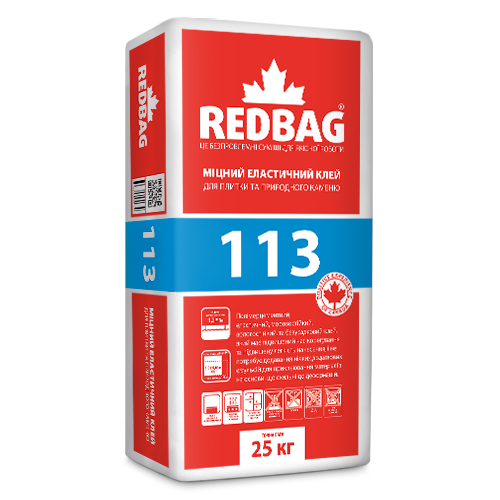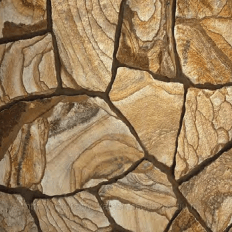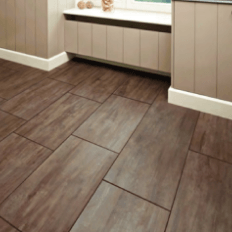REDBAG 113 - adhesive mixture intended for internal and external cladding of walls and floors made of strong concrete, brick, cement-sand, cement-lime, gypsum and other mineral bases, including those subject to deformation (i.e.: A. Bases subject to mechanical influences - vibrations through the foundation or from equipment, as well as partitions assembled on a profile system - plasterboard, gypsum fiber boards. B. Bases subject to atmospheric or temperature influences, namely sudden changes in temperature, but not higher than +70 ºС - facade insulation system, base in which a water or electric underfloor heating system is installed (except for cases when it is necessary to lay tiles on an electric mat), basements, terraces, balconies, roofs that are in use, etc. C. Bases that have a layer in their structure that "is "floating" - often the insulation is extruded polystyrene foam, or have a separate layer - cardboard, polyethylene, bitumen substrates ...) porcelain stoneware tiles, ceramic, concrete compacted tiles, clinker, glass tiles, and tiles made of natural (except light marble) and artificial stone with water absorption from 0% and a size of up to 800×800 mm (or an area of no more than 0.64 m2 with a maximum length of one of the sides of no more than 1000 mm). The REDBAG 113 mixture can be used for facing surfaces without removing old tiles, i.e. "tile by tile". Attention! In cases where the surface of the tile is glazed, it is necessary to treat the surface of the tile with REDBAG SUPERSTICK adhesive primer.
The adhesion strength to the base is not less than 1.2 MPa.
For gluing porcelain tiles measuring 600×1200 mm, use the highly elastic mixture REDBAG 114.
For gluing glass mosaic and light marble, use the snow-white highly elastic mixture REDBAG 115.









